|
|
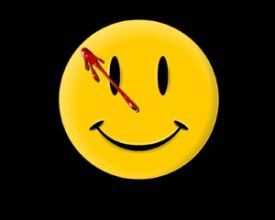 |
What
The Watchmen is a comic book maxi-series published between 1986 and 1987 by DC Comics. Set in 1985, Dr. Manhattan is the ultimate weapon of the Government of the United States of America. Dr. Manhattan is the world’s first super hero with actual powers. While there had been vigilantes, masked men and even super hero teams in the 1940s and 1970s, none of the colourfully-dressed heroes had actual powers. Because of Dr. Manhattan, there is no need for super heroes and they have been banned in the United States.
One of them, Rorschach, doesn’t want to quit and is investigating the death of the Comedian. The Comedian is an old super hero who was still active and working for the United States’ Government. Rorschach tries to enlist the help of fellow Minute Men, the Silk Spectre II and the Nite-Owl. What they discover about the assassination of the Comedian will change the word forever.
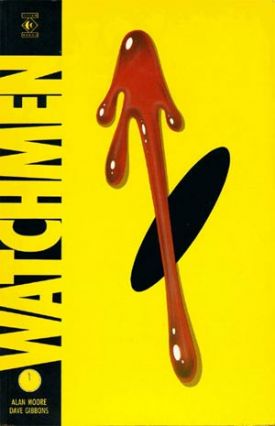 |
Who
The Watchmen was written by British author Alan Moore, the writer for V for Vendetta, Swamp Thing, The League of Extraordinary Gentlemen, From Hell and Lost Girls. It was drawn by British artist Dave Gibbon. Both Moore and Gibbons are considered members of the famous comic book British invasion of the 1980s where American publishers like DC and Marvel Comics recruited overseas talents to work on their comic book series. The influx of talent from the British Isles changed the storytelling traditions of comic books in the United States and coincided with a revival of the genre with more adult nuances and material.
While Gibbon is still active in the comic book industry, Moore has actively tried to steer clear of Hollywood and major comic book publishers’ path and always refuses credits and payments for adaptations of his work in other media, such as movies. He is currently published by Top Shelf Productions.
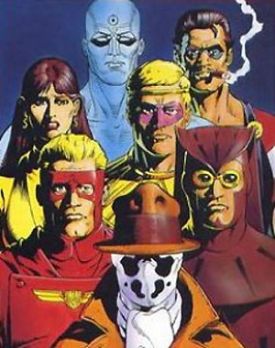 |
When
The story in The Watchmen assumes that because of Dr. Manhattan, the United States easily won the Vietnam War and President Richard Nixon has been re-elected several times because the Watergate scandal did not happen.
Thematically, The Watchmen is set around the same time as V for Vendetta where in that comic book too, a fascist, but democratically elected government has taken over its country. The period of the arms race and Cold War between the West and the Soviet Bloc is a constant theme in stories penned by Moore in the 1980s.
Moore’s worlds are bleak and show a possible outcome for democratically elected government, if they take too much power from the people in whose name they govern.
The mid 1980s were also a time of experiment in the comic book world. In America, the Black and White boom was just starting, with many small publishers trying their hands at generating material for an audience growing older. After cleaning its universe, DC Comics allowed many creators to reinterpret its classic characters and bring them in new directions. This why the characters from The Watchmen were inspired from existing comic book characters published by Charlton Comics which had just been purchased by DC Comics.
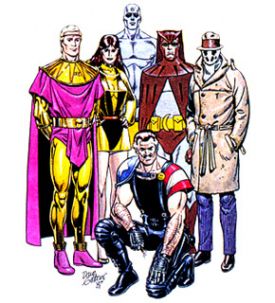 |
Where
One of the reasons that Moore has always been against the adaptation of his comic book work into novels and movies is because he writes specifically for comic books. The storytelling he uses and how the artists working with him illustrate the stories he pens is a unique collaboration of minds which is usually best achieved under one cartoonist responsible for both the writing and the visuals.
In The Watchmen, Moore and Gibbons were capable of maximizing the storytelling tricks native to the comic book medium to tell more of the story visually. Therefore when reading The Watchmen, readers should not quickly skip over the visual part and only rely on the captions to get meaning. A lot of information which is not stated through text is available in each frame of the story.
In The Watchmen, the comic book page has to be treated almost like a character and an important part of the story, as opposed to just one vehicle from which the story is told. Hence, this is one of the reasons why Moore opposes the adaptation of his work outside of the comic book space.
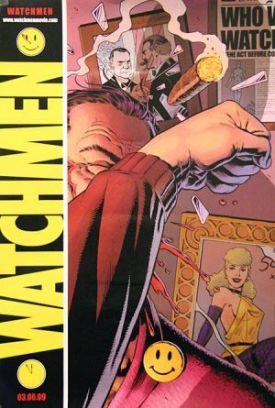 |
Why
The Watchmen has won many awards and been collected as a complete book which some call a graphic novel. For my part, to be a real graphic novel, The Watchmen should be a complete work printed as one book originally and not over a twelve months' period in several periodicals.
Those who like to call The Watchmen a graphic novel do so to elevate it from the source material and environment it came from, the lowly comic book. Using the “distinguished” word graphic novel to brand The Watchmen, is a way of signalling that it is not just another comic book. This odd and inaccurate way of labelling The Watchmen shows how much influence and respect creators and readers have for the work.
This author thinks that there is nothing wrong with the word comic book. Moreover, those who for facetious and grandstanding reasons chose the word graphic novel to describe a comic book that was not published as a graphic novel, are ignoring that The Watchmen worked as a comic book because it bathed in the very conventions, forms and even clichés of the traditional super hero comic book. It made uses of the periodical format and the time lapses which readers had to wait to reinforce the themes of its story. To deny that The Watchmen is a comic book in favour of the more politically correct appellation “graphic novel” is to deny what The Watchmen accomplished and why it helped elevate the comic book in the first place.
I think The Watchmen is the best super hero comic book ever written. Every other comic book with some intellectual depth is always compared to The Watchmen. Many Watchmen killers have been proposed over the years, such as The Golden Age mini-series, by James Robinson and Paul Smith, Kingdom Come, by Mark Waid and Alex Ross, and The Authority, by Warren Ellis and Bryan Hitch.
Although many of these comic books feature the type of realism and revisionism which has dominated the super hero comic book, since the release of The Watchmen and Frank Miller’s The Dark Knight, none of them has played as much with the basic elements of sequential art, the art of the comic book. Most used The Watchmen as their launch pad into the world of gritty super heroes. However, they do not contain the intellectual prowess or the layered meanings that Moore and Gibbons imbued in The Watchmen.
This is why readers, who read The Watchmen, even in 2008, are still astounded by the freshness of the narrative and how it directly relates to their world. The same cannot be said for the many Watchmen killers.
© Copyright 2002-2021 by Toon Doctor Inc. - All rights Reserved. All other texts, images, characters and trademarks are copyright their respective owners. Use of material in this document (including reproduction, modification, distribution, electronic transmission or republication) without prior written permission is strictly prohibited.

